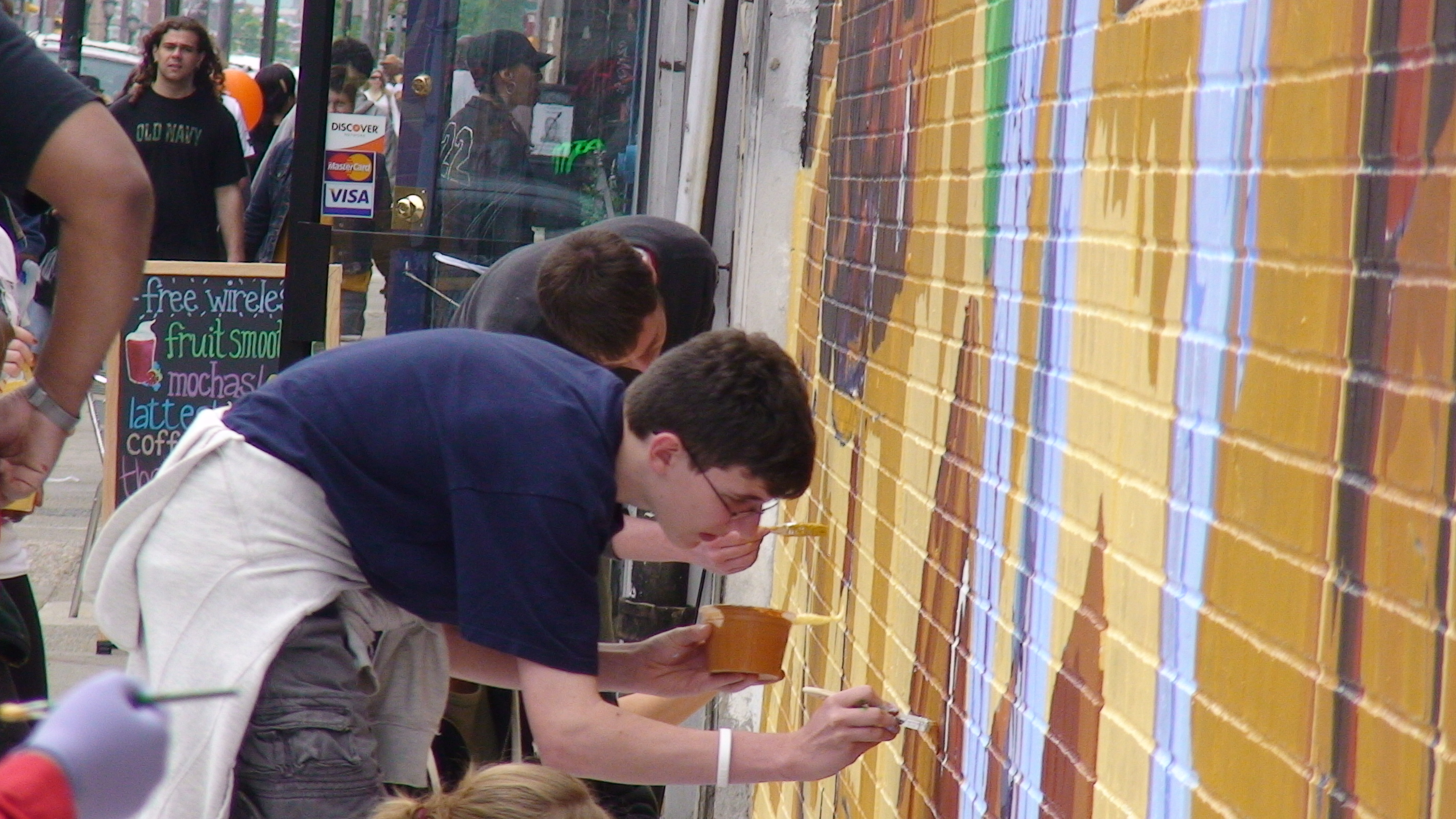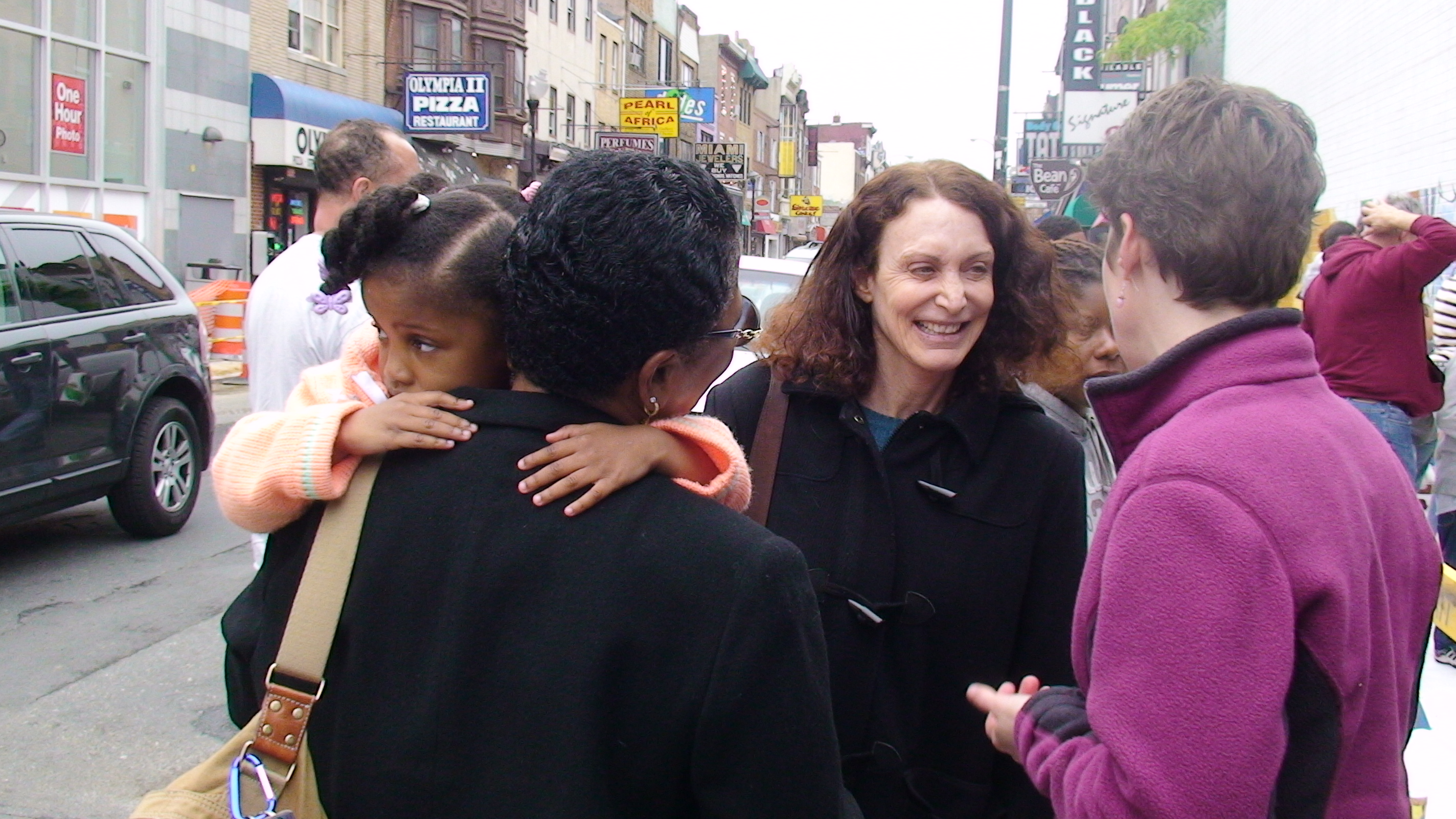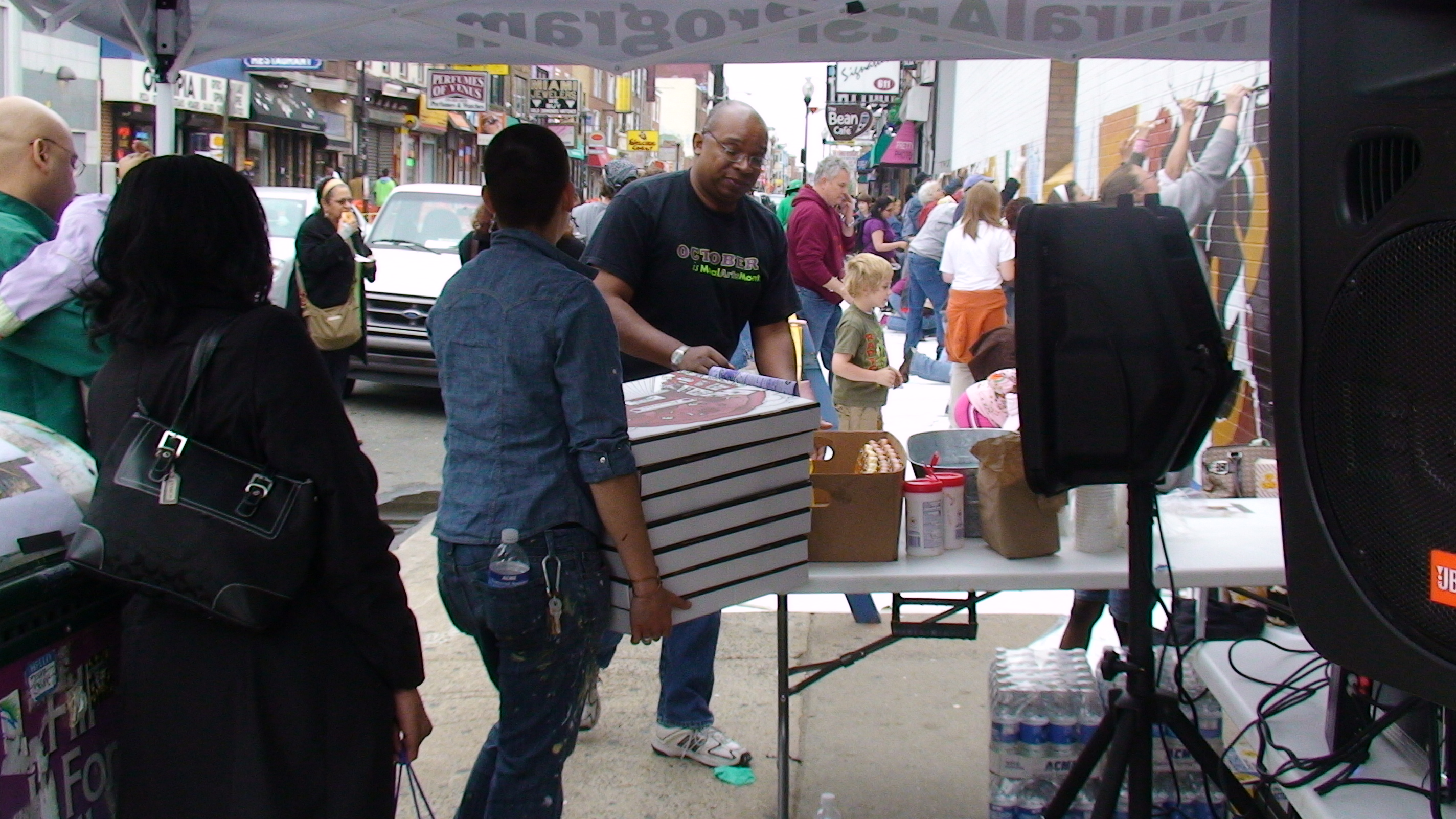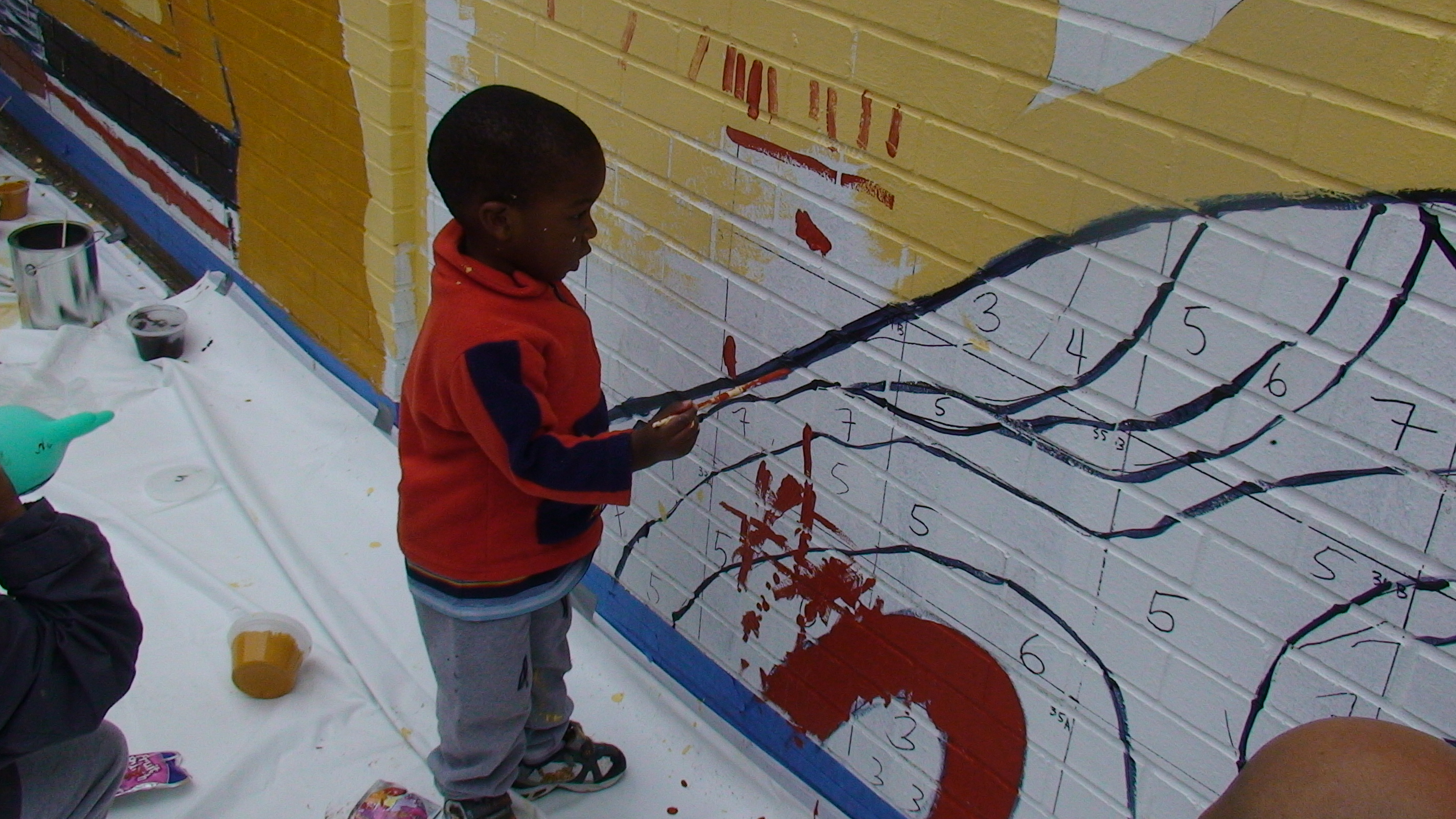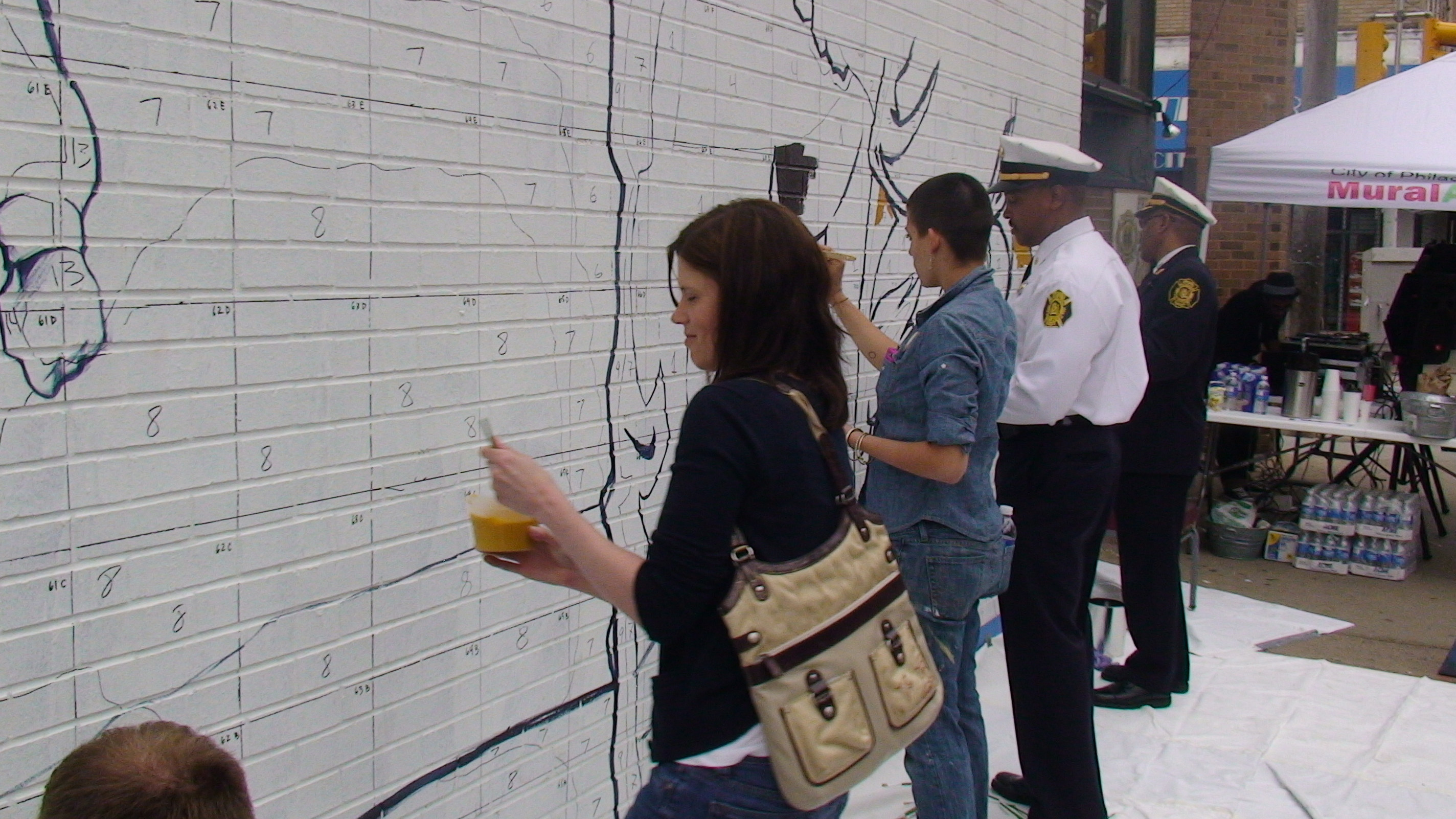The Mural
Artist Willis Humphrey created the mural, “Mapping Courage,” in 2008. This Philadelphia Mural Arts project reflected a collaborative process, involving high school students and current Seventh Ward residents. The mural honors Du Bois as scholar and social scientist as well as the everyday Seventh Ward residents he interviewed.
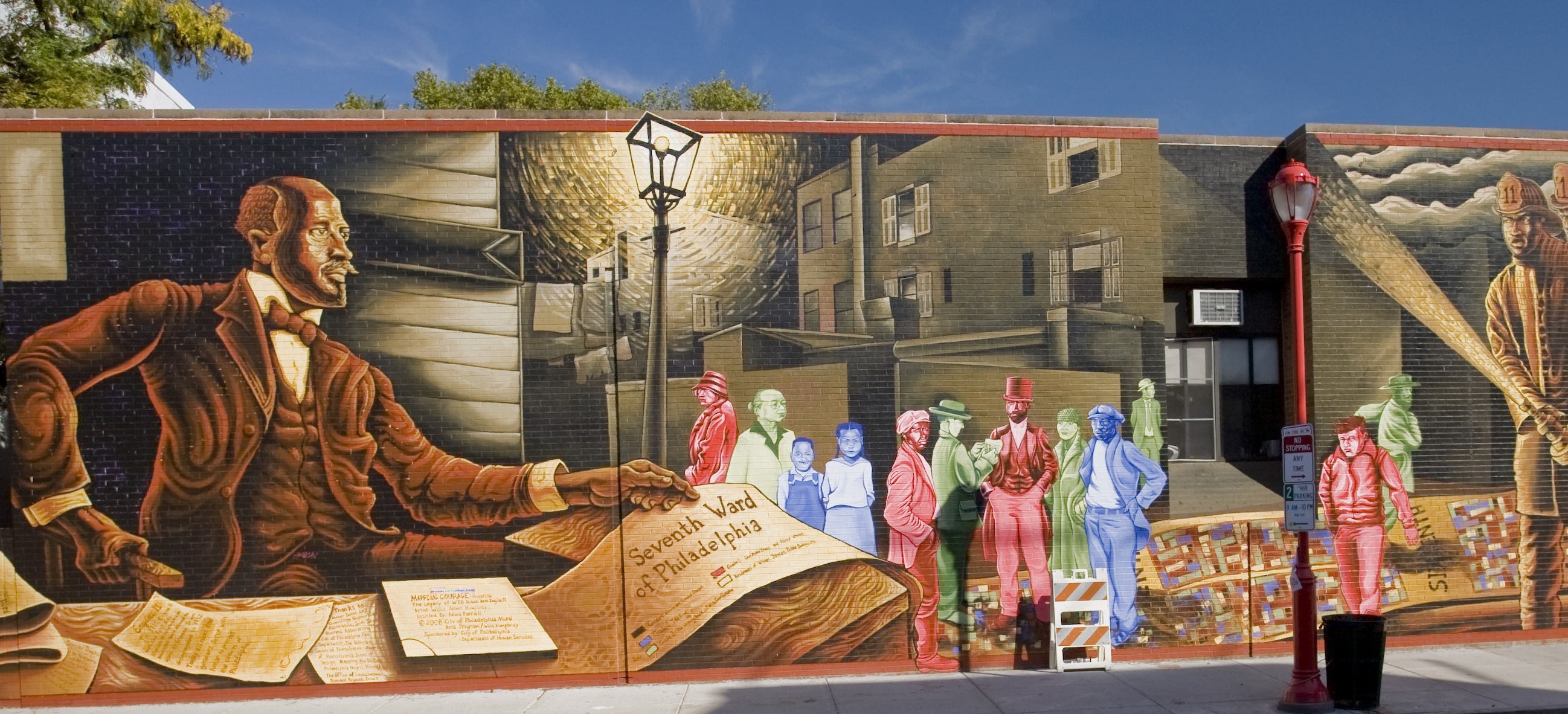
The mural honoring Du Bois, “Mapping Courage,” is on the side of Engine Company No. 11 at 6th and South Street. Photograph taken by Jack Ramsdale 011014.
In Philadelphia, we celebrate our heroes with murals. We would like W.E.B. Du Bois to join the pantheon of great African American leaders celebrated by murals alongside Paul Robeson, Malcom X, Jackie Robinson, Sonia Sanchez, Grover Washington, Aretha Franklin, and others.
Dr. Amy Hillier
Du Bois Mural at Penn
Amy Hillier originally proposed a mural on Penn’s campus in 2006, specifically on the east-facing wall of the Kappa Sigma fraternity, just outside the McNeil Building, home to Penn’s Sociology Department. The application went nowhere; Penn’s Art Review Committee had no intention of putting a mural on campus.
The Daily Pennsylvanian wrote an article entitled “Up Against A Wall.” If the Art Review Committee had been enthusiastic, the next step would have been working with the national Kappa Sigma fraternity office since they own the building.
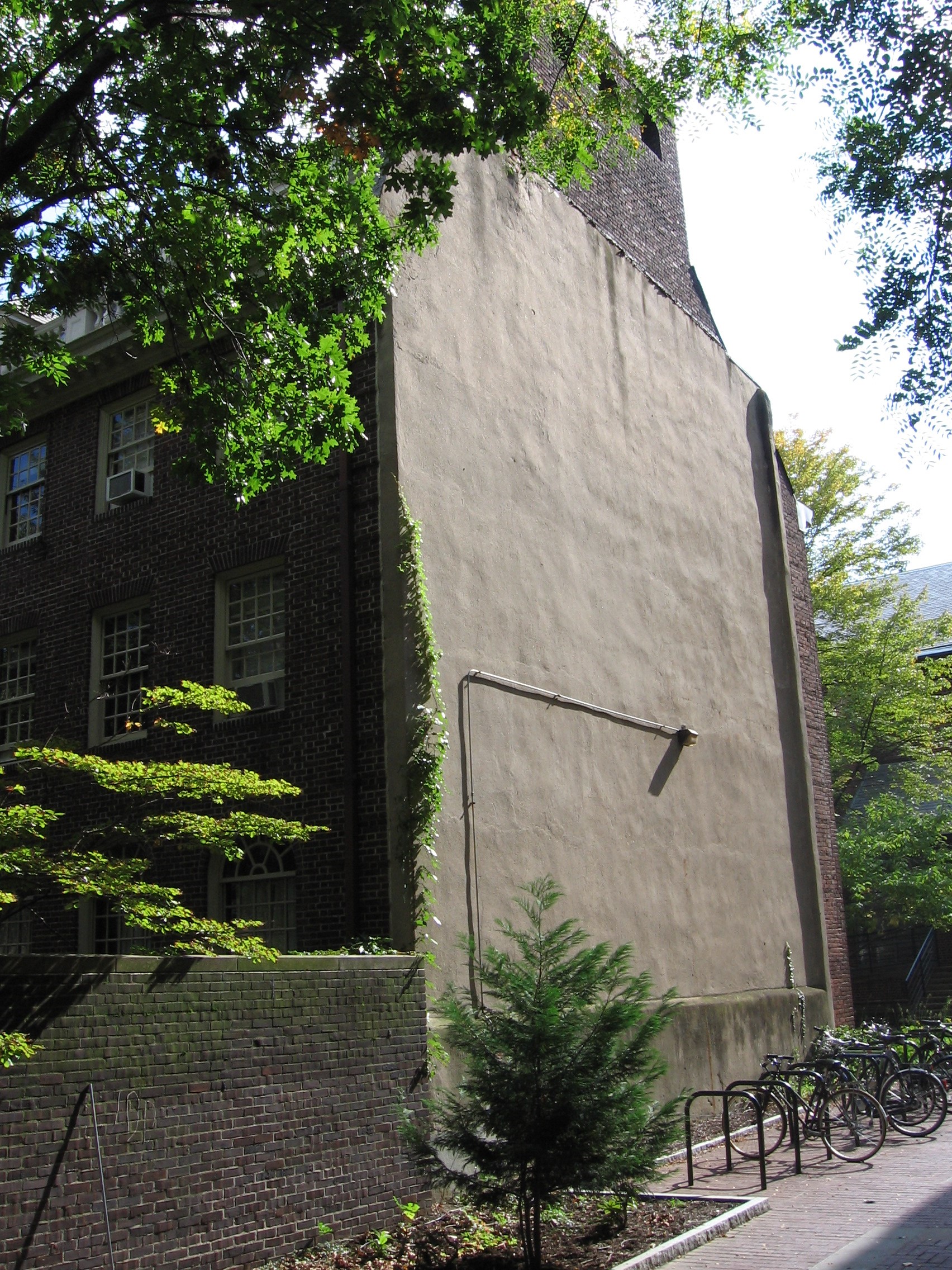
Image of the Kappa Sigma fraternity house. Amy Hillier initially proposed a mural of Du Bois be painted on the side of the Kappa Sigma fraternity house on Penn’s Locust Walk.
Applying to Mural Arts
For anyone visiting South Street or living in the neighborhood Du Bois surveyed, there are few signs that this neighborhood was once home to a mix of American-born whites, northern blacks, black southern migrants, and European immigrants."
A few of the major Black institutions, including Mother Bethel A.M.E. Church, remain, but more typical is the Institute for Colored Youth, now upscale condominiums. In Philadelphia, we celebrate our heroes with murals. We would like W.E.B. Du Bois to join the pantheon of great African American leaders celebrated by murals alongside Paul Robeson, Malcolm X, Jackie Robinson, Sonia Sanchez, Grover Washington, Aretha Franklin, and others.
There is a historical marker noting Du Bois’ research in Philadelphia near the desired location for this mural, but we feel that there should be a more visible representation to honor him.
A mural is the most visible and exciting way we know to celebrate Du Bois’ role in Philadelphia, and a mural of Du Bois at the edge of the neighborhood he studied 100 years ago is a way of generating interest and discussion about this largely ignored history.
- Amy Hillier and Anne Garcia (a MSW student)
An excerpt from their 2006 application to Mural Arts for a mural of Du Bois
Deciding on a Location
In the original application, we suggested painting the mural on a building at Sixth and Rodman Streets, across from Starr Playground where the College Settlement Association was originally located. The blank wall faced a parking lot maintained by Engine Co. 11, thus offering protection to the mural.
Mural Arts director Jane Golden had bigger ideas. She proposed combining a Du Bois mural with one honoring the firefighters of the originally all-Black Engine Co. 11, the only fire station where Black firefighters could serve until Philadelphia’s fire department desegregated in 1952. And she proposed 6th and South Streets, facing South Street, as a much more prominent location for the mural.

This Google Streetview image shows Engine Company No. 11 at 6th and South Streets before the Du Bois mural was painted in 2008.
The Design Process

The Design Process
The mural design process involved integrating historical sources, public feedback, and revisions to capture W.E.B. Du Bois’ dual roles as scholar and community engager.

Muralist Willis Humphrey presented this initial sketch at a community meeting about the Du Bois mural.
Amy Hillier shared primary source documents with Willis Humphrey who Mural Arts selected as the muralist. These included Du Bois’ color-coded map of social class in the Seventh Ward, a photograph of him sitting at his desk at his office in Atlanta, Georgia in 1909, and a photograph from the Octavia Hill Society collection depicting a 19th century Philadelphia courtyard and rowhouse.
Willis integrated all of these and shared a preliminary sketch at a public meeting.
Students from Masterman High School who were in attendance took exception to what they perceived to be an aloof interpretation of Du Bois, sitting back at his desk rather than conducting research among the people of the Seventh Ward. In his final sketch which included color, Willis included a second version of Du Bois, standing among the people of the Seventh Ward.
We refer to this as the “Masterman Compromise,” underscoring the importance of a “both/and” approach to understanding Du Bois as a complicated person who did hold class prejudice and Victorian judgments and, at the same time, conducted door-to-door surveys and talked extensively with Seventh Ward residents.
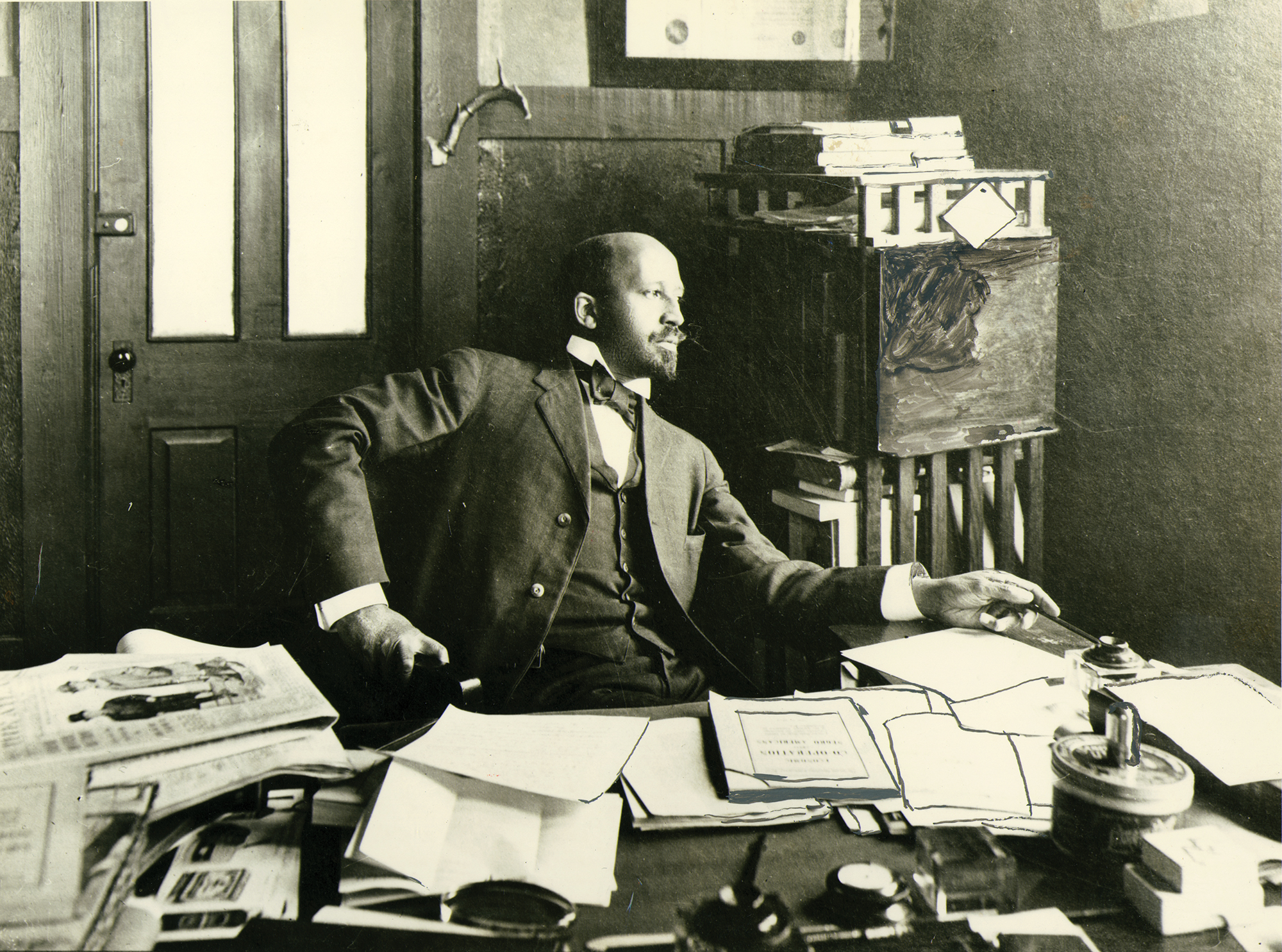
Du Bois at his desk in his office in Atlanta, Georgia (1909). (Image courtesy of the UMassAmherst W.E.B. Du Bois Papers, 1803-1999.)
MURALIST
Willis Humphrey
Will Humphrey, also known as Nomo, already had experience painting Du Bois when Mural Arts selected him as the artist for the Du Bois mural.
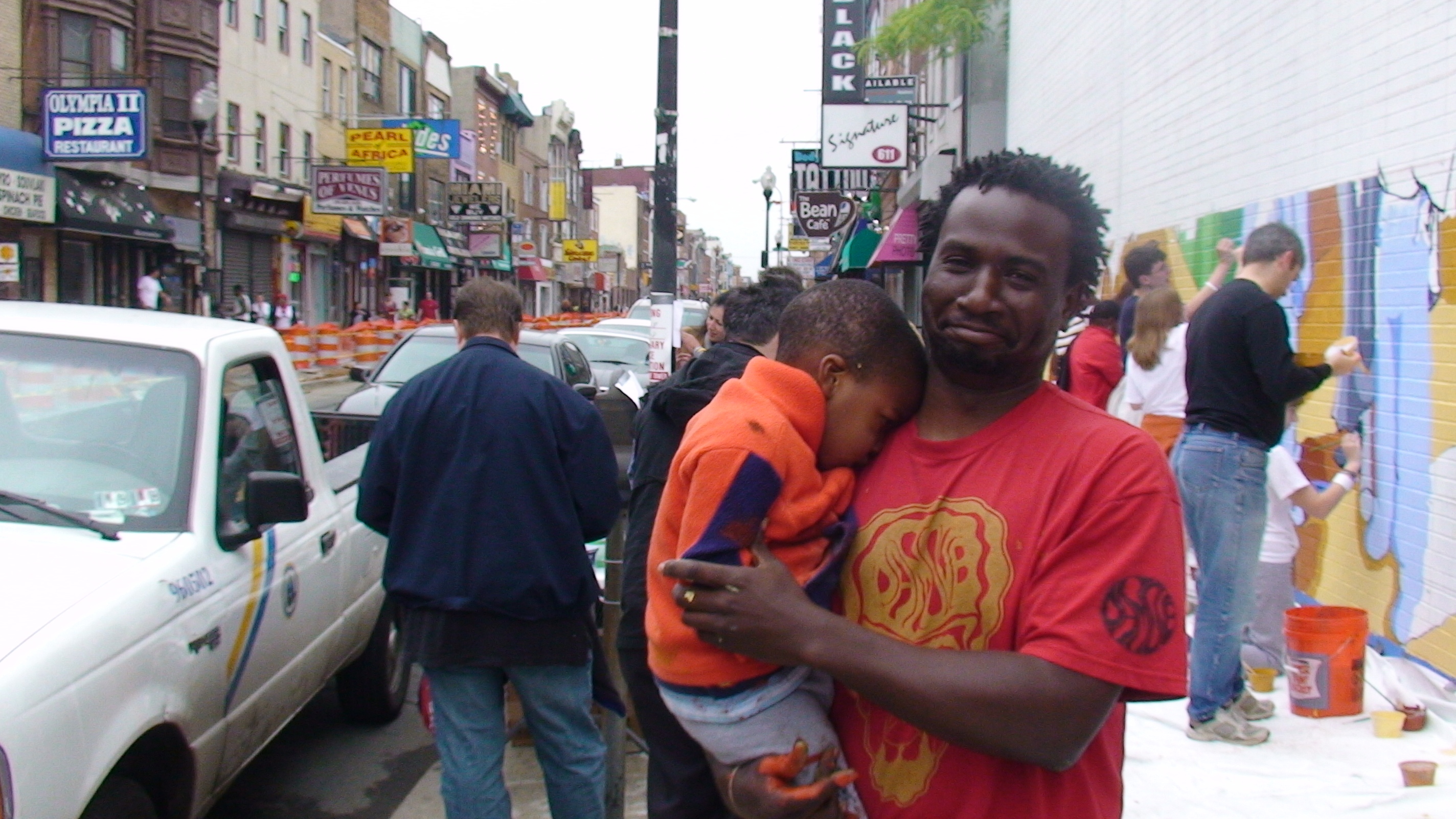
Muralist Willis Humphrey’s son participated in the Community Paint Day in April 2008.
Specifically, he painted “Bridging the Gap,” a mural connecting African Americans with African immigrants in southwest Philadelphia. He also painted the mural of Richard Allen at 38th & Market. Several years after the Du Bois mural, Willis painted a mural of Philadelphia martyr, Octavius Catto, with Keir Johnson.
Willis died suddenly from a heart attack in 2018, at age 44. He was remembered as exceptionally kind and gentle as well as a phenomenal artist. After painting numerous murals for Mural Arts, he became part of the full-time staff. “He was a colleague and a beloved friend,” said Mural Arts director Jane Golden. “He was my family at Mural Arts. Mural Arts is devastated.”
Community Paint Day
Mural Arts sponsored a community paint day, inviting the public to help paint the first coat of the bottom part of the mural using a paint-by-numbers scheme. Fire Department officials in uniform, neighbors, Masterman High School students, family of muralist Willis Humphrey, and five generations of Miss Veronica’s family joined in.
Neighbors, students, and Mural Arts staff all participated in the Community Paint Day in April 2008.
The Final Design
Will color-coded the people in the mural based on Du Bois’ map--red for “middle class and those above,” green for “the working working people--fair to comfortable,” blue for “the poor” and black/gray for “vicious and criminal classes.”

He also incorporated Veronica James Hodges (second from left, in light green) as one of the faces of the Seventh Ward residents.
She had lived at 408 Camac Street with her family in the 1910s. Jimmy Calnan, who lived in that house decades later, provided Willis with photographs of her.
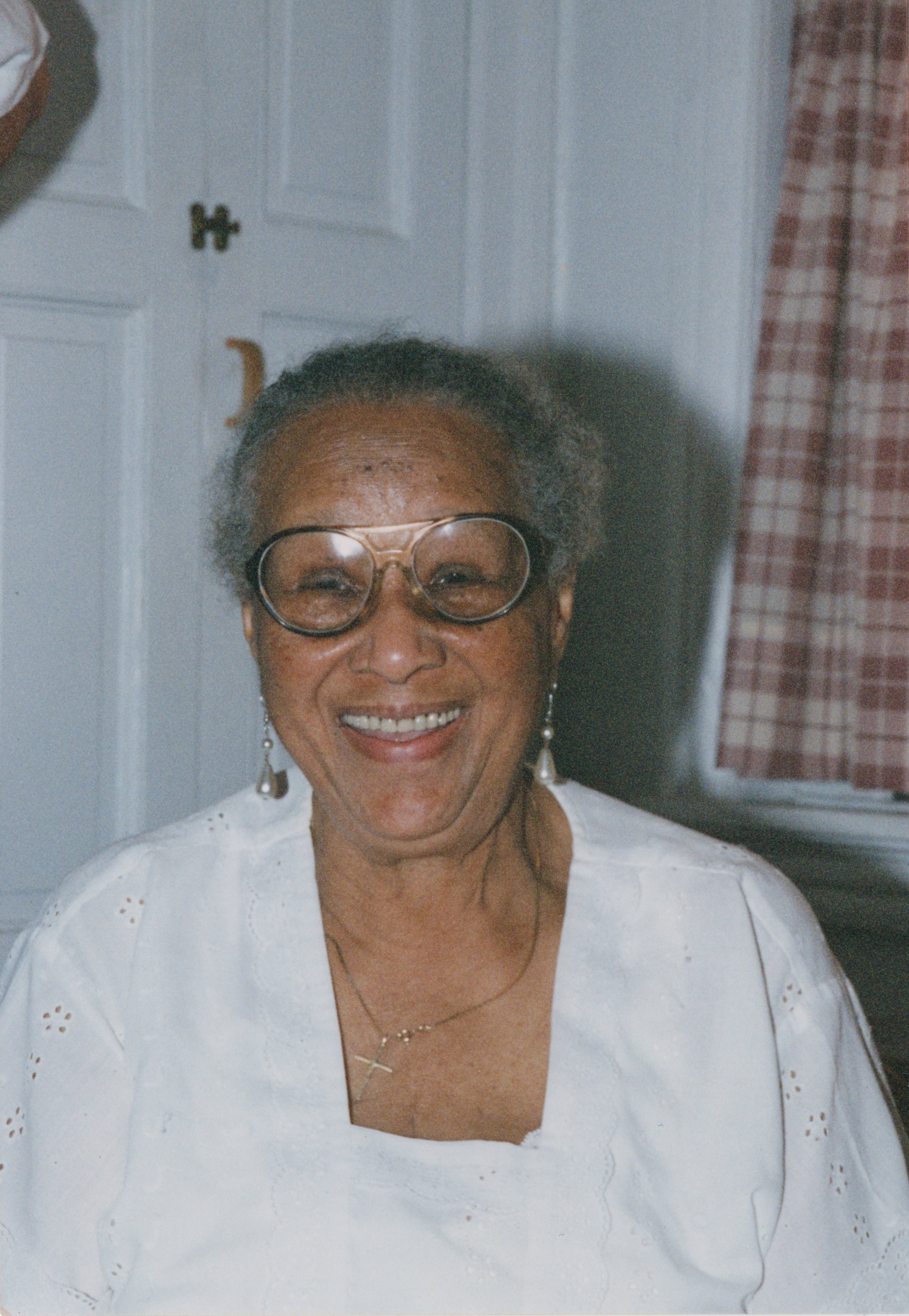
Veronica James Hodges
Mural Dedication
Rain forced the mural dedication inside Engine Company 11, amplifying the energy and sound of the kids’ drum line. Mayor Michael Nutter, Fire Commissioner Lloyd Ayers, Ronnie Hodges (granddaughter of Miss Veronica), and Jimmy Calnan all spoke. Du Bois’ great-grandson, Arthur McFarlane II, was a special guest and was presented with a proclamation from the City declaring October 25, 2008 W.E.B. Du Bois Day in the City of Philadelphia.
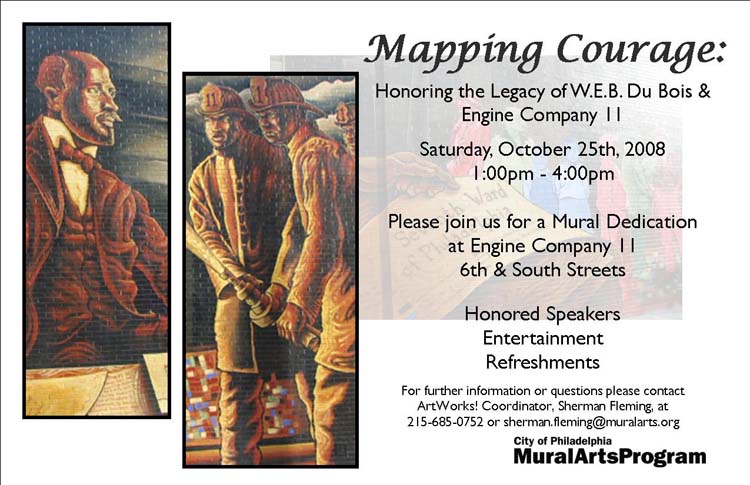
Mural Dedication
Rain forced the mural dedication inside Engine Company 11, amplifying the energy and sound of the kids’ drum line. Mayor Michael Nutter, Fire Commissioner Lloyd Ayers, Ronnie Hodges (granddaughter of Miss Veronica), and Jimmy Calnan all spoke. Du Bois’ great-grandson, Arthur McFarlane II, was a special guest and was presented with a proclamation from the City declaring October 25, 2008 W.E.B. Du Bois Day in the City of Philadelphia.

The mural honoring Du Bois, “Mapping Courage,” is on the side of Engine Company No. 11 at 6th and South Street. Photograph taken by Jack Ramsdale 011014.

